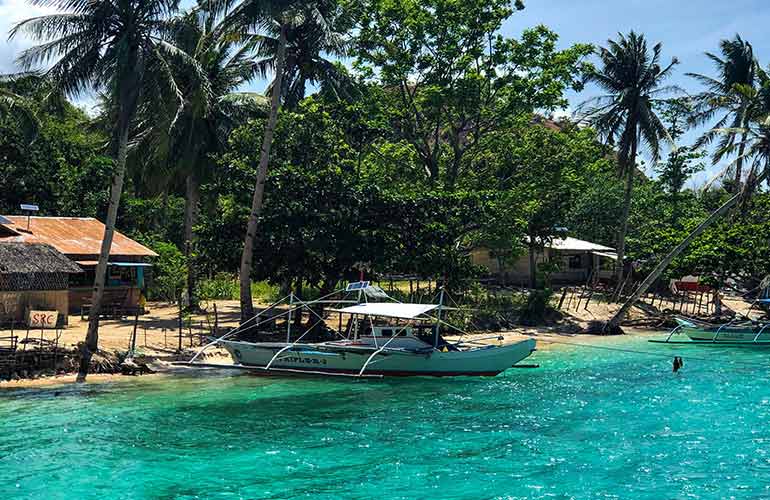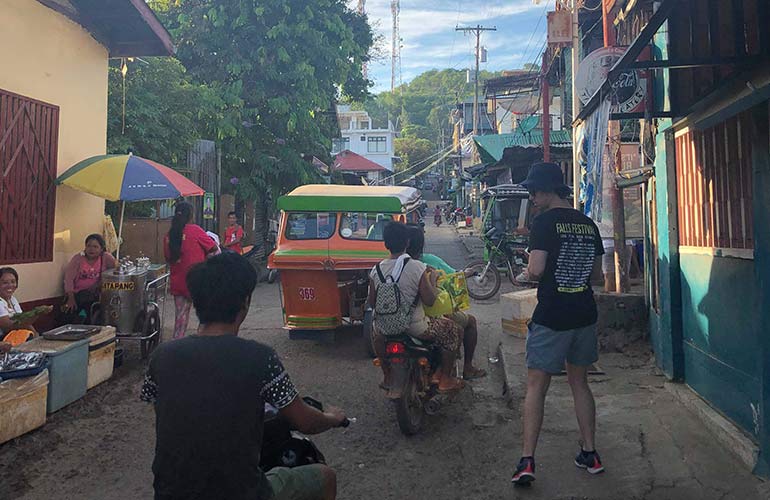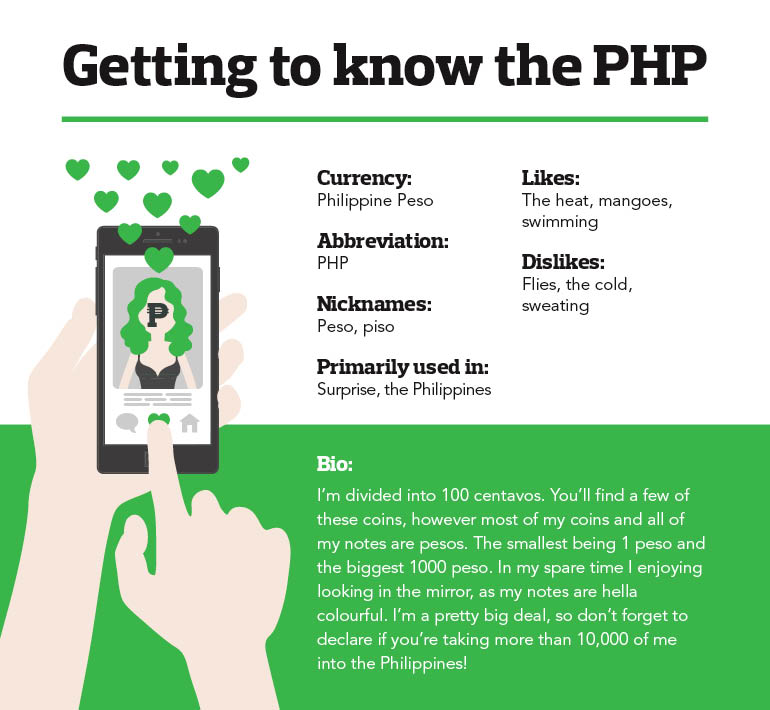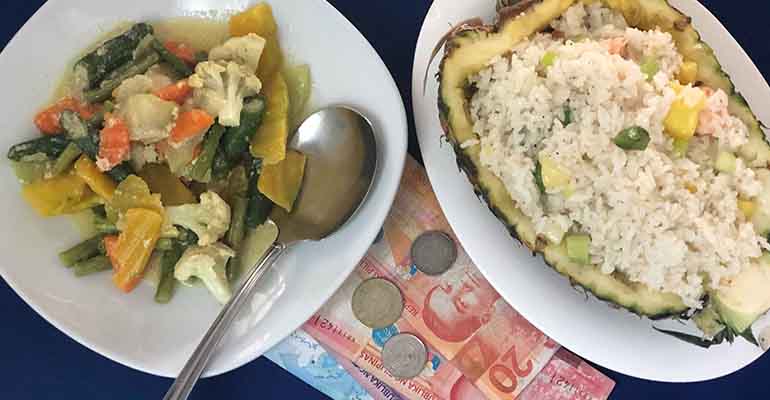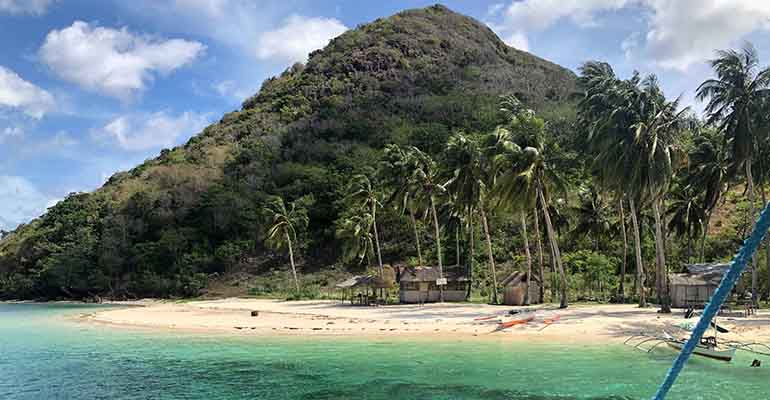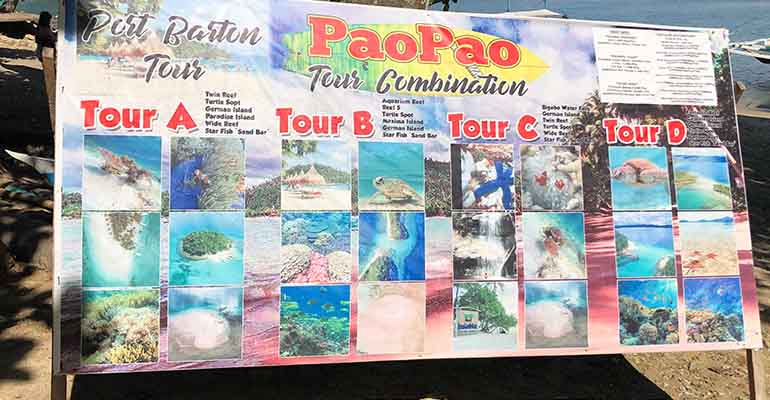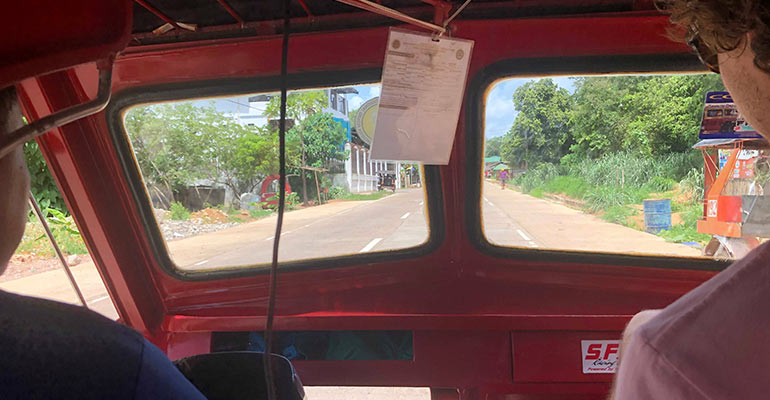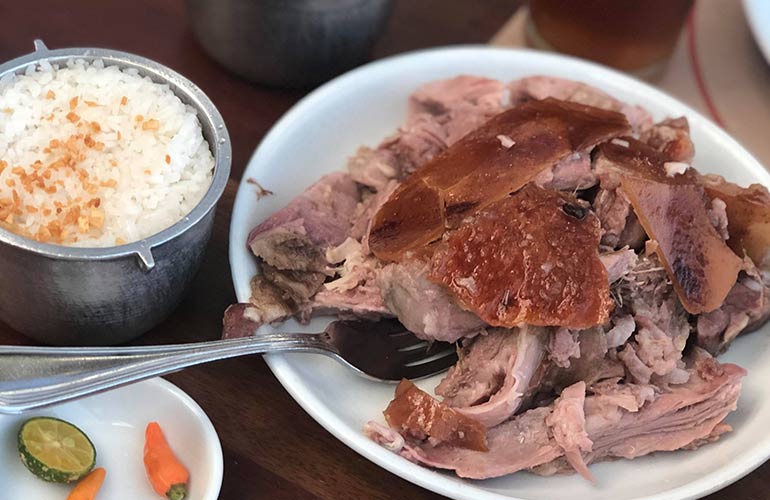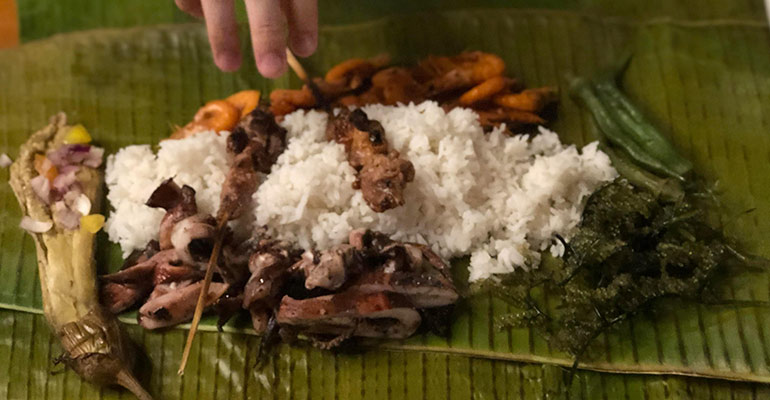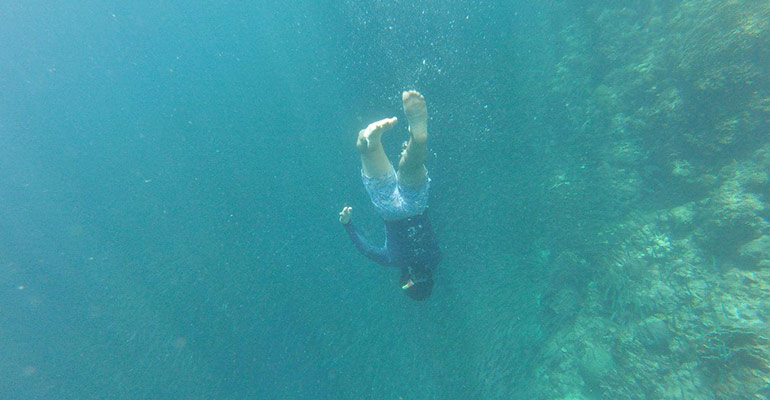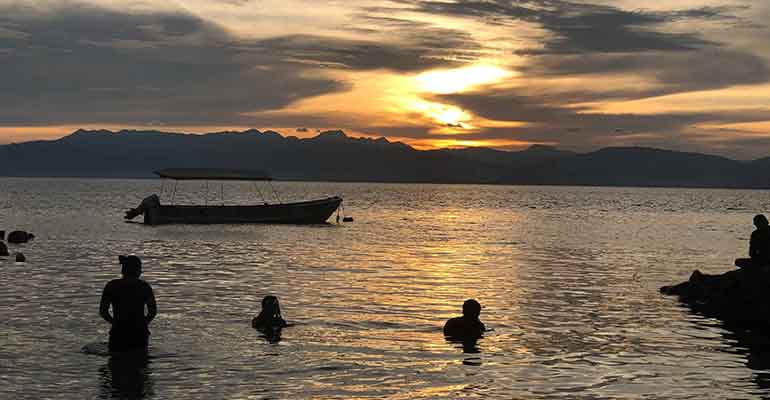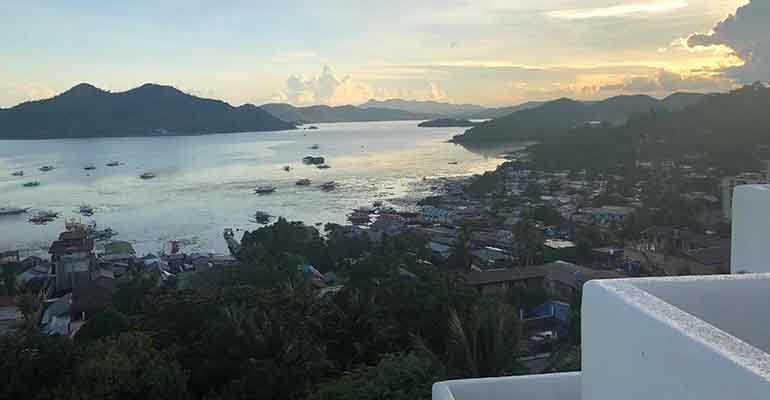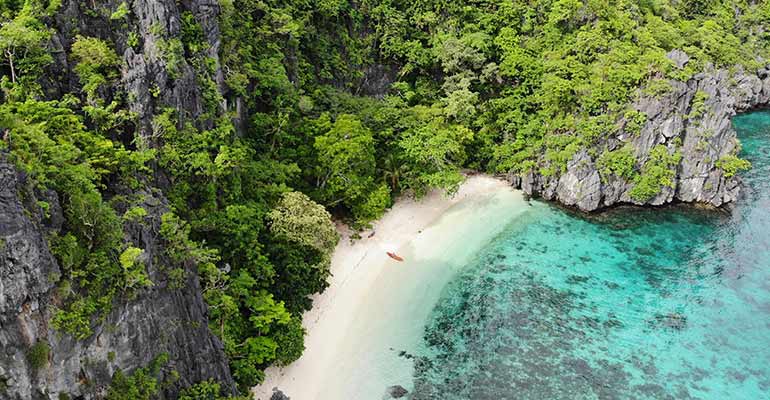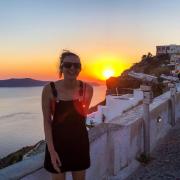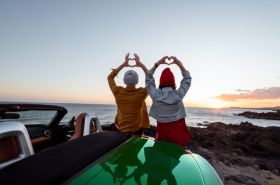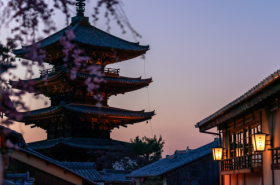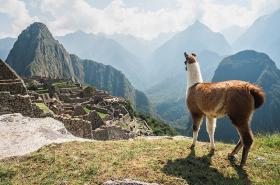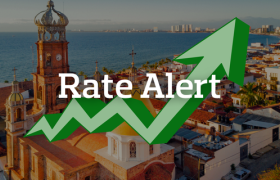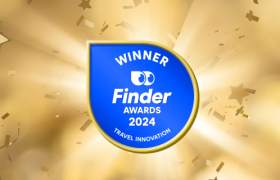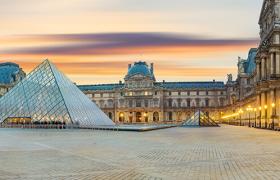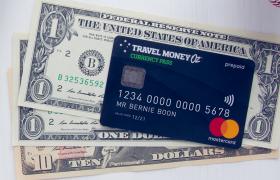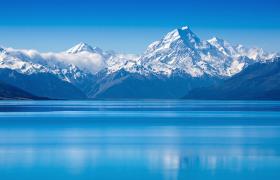Money
The Philippines uses the Peso. While travelling, you'll become accustomed to the following denominations:
Notes – 1000, 500, 100, 50, 20, 10 and 5 pesos. We saw a 200peso note twice in three weeks, so consider them a unicorn of sorts.
Coins – 10P, 5P, 1P, 50c, 25c, 10c, 5c and 1c coins will become your best friend while travelling. Things are super cheap, so coins are often the way to go.
Most ATMs only dispense 1000 peso notes, which is super annoying because most things cost less than 1000 and a lot of vendors don't have change. With this in mind, I recommend the following:
- Try and get a mix of denominations when first exchanging your AUD to PHP. The team at your local Travel Money Oz store will be able to help you out with that.
- Break your 1000 peso notes whenever possible at bigger stores and restaurants that are more likely to have change. That way you won't be stuck when a trike driver or small stall owner can't give change for your larger notes.
Peso notes are really colourful and easy to decipher; however, the coins can be pretty random in their sizes, so be sure to pay attention to the numbers on them.
As mentioned earlier, ATMs can be hard to come by at times, especially in smaller towns. When you do find an ATM, they charge you 250 peso and have a pretty sub-par exchange rate if you don't have PHP loaded onto your card (not many cards allow you to load PHP). With this in mind, I recommend exchanging as much as possible before you leave Australia. If you do need to use an ATM, take out a more significant sum to avoid having to pay another 250 pesos later on down the track. Also, and check the exchange rate offered by your card - chances are it will be better than that of the ATM, so you can opt-out of the ATM's rate and default back to that of your card.
Is the Philippines cheap to travel?
Yes and no. The cost of living is definitely cheaper then Australia, however the Philippines is a fair bit more expensive then its other South-East Asian counterparts like Vietnam, Cambodia and Bali. We've written a whole blog on how much you need to travel the Philippines, so check that out for a better idea of how much you can expect to spend.
Tours and Beaches
When you arrive in the cities, you generally can't just swim off the beach (with a few exceptions like Port Barton and Moalboal). To see the crystal clear water and white sand, you will need to book a tour. Most cities offer set tours: A, B, C, D and some even have E and F. The tours are literally called the letters of the alphabet and each letter is the same regardless of which provider you go to (e.g. tour A will got to the same 5 locations no matter where you book). Each tour will take you to specific locations and includes lunch, guides and a snorkel. Regardless of where you are, tours will range between 800 – 2000 pesos. You can't barter with these prices, as they are set across the whole town; instead, it's just a matter of finding an excellent tour operator. There are stores throughout every city offering you tours, so just pop on the old Google and see which one has the best reviews.
Four tour options in Port Barton
Once you do get on a tour, expect a picture-perfect day cruising around four or five island hotspots, plenty of swimming, stunning coral reefs and some of the clearest water you can find. The lunches are always pretty reasonable and delicious, catering to most food/dietary requests.
The Water
The Philippines is still very much a developing country. As a result, their water quality is quite poor, especially in El Nido and some remote villages. Avoid losing a few days to water sickness by ONLY buying bottled water and being careful in the shower.
Now I admit, buying bottled water didn't sit right with me as I hated all of the plastic and had brought my own refillable water bottle. I refilled it a couple of times from 'safe refill locations' and quickly learned that they weren't all safe. I tried to reduce the amount of plastic by only buying bigger bottles (1 – 2L) to avoid the waste associated with heaps of little ones.
Water is cheap to buy, ranging from 10 – 90 pesos, so it won't make a dent in your holiday budget either.
Is the Philippines safe to travel
It depends on where you visit, as some areas of the Philippines can be quite unsafe for tourists. However, most tourist hot spots like El Nido, Coron, Cebu and Manilla are safe. If you are worried, be sure to check out Smart Traveller as it has the most up to date advice. Otherwise, just be mindful of scammers and don't go for walks in the jungle by yourself and you should be fine.
Getting Around
Everywhere you go, you will find four major transport options:
- Trikes (kind of like tuk-tuks)
- Private cars/taxis
- Jeepneys
- Buses
Birds eye view of a trike ride.
For longer transfers between towns, buses and private cars are your best bet - it just depends on how much you are willing to spend. For example, to get to Moalboal from Cebu City is about a 3-4 hour drive. When we first arrived in Cebu, we got straight in an airconditioned private transfer that cost about 2500 pesos. On the return trip, after we had spoken to a few tourists, we felt comfortable catching the local bus. The whole trip only cost us 300 pesos each and was surprisingly comfortable.
Getting around towns, beaches and cities require either a trike or a Jeepney. Trikes are pretty reliable because they are everywhere; however, the drivers know a tourist when they see one and will charge accordingly. This is perhaps the only time we really haggled on the price. It took a bit of practice, as the drivers weren't too happy about us questioning their exorbitant charges and were very quick just to drive off. Likewise, if they didn't want to go where we needed to go, they also drove off. Most trike rides range between 50 pesos (if you're lucky) to 300 pesos for longer distances.
Jeepneys are small scale buses/trucks with seating in the back and are widely used by locals. They are super cheap to use between 15 and 30 pesos, however, are slightly more complicated. A local was able to help us decipher with the Jeepney was going and you simply just tell the driver when you want to hop off. Jeepneys are by far the cheapest form of transport (aside from walking), however, can be slightly more confusing and less direct.
The Food
The Philippines isn't as renowned for its cuisine as it's Asian neighbours like Thailand and Vietnam. With this in mind, you can still find some pretty delicious and exciting local delicacies.
Must try dishes:
Sisig. Comes in pretty much every meat as well as vegetarian, Sisig is served sizzling with a side of rice. Prices vary depending on the meat and restaurant but range between 150 and 350 pesos.
Lechon. A huge spit roast pig. They are delicious and some of the best roast pork I have tried. For Lechon, you pay by weight. We tried Rico's Lechon in Cebu and spent about 465 pesos for ½ kg of meat which was more than enough to feed two people when combined with rice.
Halo Halo. A local dessert that translates to 'mix-mix' filled with shaved ice, cream, jelly, corn, beans, ice cream and anything else that tickles their fancy. Do some research on where to find the best ones. Prices range between 80 and 300 pesos.
Adobo. A sauce used to marinate either chicken, pork or vegetarian (mainly eggplant). The sauce itself is delicious; however, it can be quite intense in flavour. Prices vary depending on the restaurant, but you should be able to find a good adobo for between 200 and 300 pesos.
Turon. A sweet snack of banana wrapped in a type of rice paper roll. It is super delicious, and one of my favourite Filipino foods. Priced between 10 and 50 pesos per roll.
Chalong. The Philippines version of Pho. A brothy soup filled with meat and some vegetables. Generally pretty cheap, priced between 50 and 150pesos per bowl.
Bodel. A traditional meal of rice, seafood, BBQ and soup served on a banana leaf. We paid about 370 pesos for two people.
Fruit shakes. The Philippines has some delicious fruit available, and their fruit shakes were my staple over there. My go-to was mango or mango and banana. Most shakes start around 90 pesos and go up from there.
Where to go
We've already got another blog teeming with advice on where to go in the Philippines. With this in mind, I'll provide some insight into three of the most popular destinations – Cebu, Coron and El Nido.
Cebu
Encompasses' Cebu city' as well as the surrounding terrain. I'm gonna be straight up and say don't stay in the city. It is not a particularly nice place to be. With that in mind, if you do need to stay to catch a flight, find accommodation on Mactan island, so you are close to the airport.
There are a lot of beautiful places surrounding Cebu; however, my recommendation is Moalboal and Panagsama Beach. Just over three hours away from Cebu, Moalboal boasts incredible scuba diving, the famous sardine run (don't book a tour, just snorkel 10m offshore), canyoneering at Kawasan Falls as well as delicious food and cheap drinks.
Spend your days snorkelling with thousands of sardines.
Moalboal was by far my favourite place we visited in the Philippines, mainly because you can swim right off the beach and be treated to incredible snorkelling. The nightlife and food scene is fantastic and always bustling with backpackers. Despite the beauty of Moalboal, it is still relatively forgotten by tourists that head straight to Palawan.
Sunset on Panagsama beach.
Tip: If you are departing internationally from Cebu airport, you will need to pay 850pesos per person terminal fee. This isn't really advertised until you get to the terminal itself, so be sure to include it in your budget. They only accept cash or visa cards as payment; however, there are ATMs outside that will accept MasterCard with an additional ATM fee.
Coron
The city itself is… well, it's pretty underdeveloped. If you've ever said 'I want to visit a place before tourism changes it' then I recommend you go to Coron. A town still coming to terms with the fact that it is an up and coming tourist destination.
The pictures you see of Coron are actually of 'Coron Island', which can be accessed from Coron Town through day tours. These tours take you to several picture-perfect hot spots, are well worth the money and are the reason people go to Coron.
You can get a boat here from El Nido, or you can fly into the airport from most major airports including Cebu, Puerto Princesa and Manila. Once you arrive at the airport, you get a taste of what's to come… the airport is a small building, and instead of your luggage coming on a conveyor, it just gets chucked on a wooden stand. From here you walk out into the heat through a gauntlet of tour companies shoving flyers in your face. Don't book a tour here, they are more expensive. Once you make it through the gauntlet, there will be a heap of taxi/ private van drivers. Just tell them where you are staying, and they will direct you to the right van. The transfer is then 30 – 60 minutes and is a flat rate of 150 pesos per person.
Coron is up and coming, and the prices are reflective of this as it is slightly more affordable than its neighbour, El Nido. If you are looking for a stunning view of the bay, visit the Hop Hostel rooftop bar, or brave the 700+ step hike to the viewpoint.
View of Coron
I chose to do a three-night/four-day boat tour from Coron to El Nido with Buhay Isla, and it was incredible. If something like that tickles your fancy, be sure to check out our blog all about it.
El Nido
Far more developed and touristy than Coron. The harbour is teeming with boats ready to take you on day tours. In the town, you will find souvenir shops, restaurants of all kinds, accommodation, bars and plenty of tour operators.
While you can swim directly off the main beach where all of the boats leave, it's kind of gross, and I wouldn't recommend unless you were desperate for a dip. Instead, you can visit Nacpan beach, which is about a 20-30 minute drive away. You can catch a shuttle bus for 350pesos per person, or you can brave a trike and pay anywhere between 800 – 1500 pesos. A rip off in anyone's books.
Like Coron, you cannot access the gorgeous islands and hidden gems without joining a tour. Once again, they are well worth the price.
As mentioned above, the water in El Nido is pretty sketchy, so be sure to keep your wits about you to avoid a day or two spent nursing an upset stomach.
I feel it is essential for me to reiterate how beautiful the Philippines is. Despite its hiccups, it is a country well worth your time. In order to make the most of your trip, however, be sure you're fully prepared for what's to come.
Get started with your prep and purchase some pesos, or get more Filipino travel tips by visiting the team at your local Travel Money Oz.
This blog is provided for information only and does not take into consideration your objectives, financial situation or needs. You should consider whether the information and suggestions contained in any blog entry are appropriate for you, having regard to your own objectives, financial situation and needs. While we take reasonable care in providing the blog, we give no warranties or representations that it is complete or accurate, or is appropriate for you. We are not liable for any loss caused, whether due to negligence or otherwise, arising from the use of, or reliance on, the information and/or suggestions contained in this blog.

